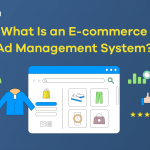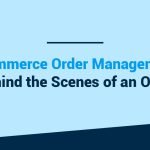
Key Points
- Multichannel ecommerce has evolved from an optional growth strategy into a standard business model for modern sellers.
- Long-term success requires more than expanding into a new marketplace; it depends on how efficiently you manage sales and operations across every channel.
- Understanding the fundamentals of multichannel ecommerce management helps create a more resilient and scalable business.
- With the right tools and processes in place, sellers can grow without overwhelming their operations or sacrificing performance.
The ecommerce landscape is more fragmented than ever. Consumers shop across dozens of channels—Amazon, Shopify, Walmart, eBay, TikTok Shop, and beyond. For brands wondering ‘what does multichannel mean for their strategy,’ it’s about being present where customers already are.
But as many fast-growing sellers discover, expanding into multiple channels often introduces a new challenge: managing the operational complexity that comes with it.
In this article, we’ll explain what multichannel ecommerce management is, why it matters, best approaches, and considerations when building a multichannel strategy.
What Is Multichannel Ecommerce Management?
Multichannel ecommerce management refers to the process of handling product listings, inventory, order fulfillment, and data across multiple sales channels. This includes ensuring product data, pricing, and availability stay accurate everywhere. It also means keeping your inventory synchronized across warehouses and fulfillment partners, so you can prevent overselling and stockouts.
Beyond listings and inventory, effective multichannel management ensures that every order is routed and fulfilled from the best possible location, keeping customers happy and operations efficient. It also involves automatically sending accurate shipping and tracking updates to buyers, maintaining transparency and trust after the sale.
Finally, it ties everything together by aligning your financials and analytics—giving you a complete, real-time picture of performance across all channels.
Without a centralized approach, teams often rely on a patchwork of spreadsheets, manual updates, and disconnected systems, slowing down operations and increasing the risk of costly mistakes.
Check out the Descartes Multichannel Ecommerce Guide for a comprehensive overview of multichannel ecommerce and how to choose the best growth strategy for your business.
Why It Matters: The Operational Cost of Channel Sprawl

Selling across channels introduces new revenue streams, but it also introduces friction. For example:
- Inventory mismatches can lead to overselling or stockouts.
- Order fulfillment delays create customer dissatisfaction.
- Manual data entry leads to inconsistencies and errors.
- Limited visibility makes it hard to scale efficiently.
These problems aren’t unique to any one channel—they’re the result of disconnected systems trying to support increasingly complex workflows.
A Better Way: Centralized and Connected Multichannel Management
Multichannel management doesn’t just mean adding more dashboards or plugins. It means rethinking how your business handles end-to-end ecommerce operations. It goes beyond connecting systems—it builds a unified foundation for every part of your ecommerce operation. The goal is to create consistency while maintaining the flexibility each channel demands.
That starts with standardizing product data across your listings while still tailoring them to meet the unique requirements of each marketplace or webstore. It also means automating inventory updates across every fulfillment source, so stock levels stay accurate whether items ship from your warehouse, a 3rd-party logistics (3PL) provider, or directly from a marketplace.
Centralizing order data is equally important. Effective multichannel order management consolidates orders from all channels into one system, allowing your team to process and manage them more efficiently while reducing errors and manual work. And when financials and performance metrics are synchronized in one place, you gain clear visibility into your business’ overall health—no spreadsheets required.
Overall, a multichannel management approach turns ecommerce operations from a reactive fire drill into a repeatable, scalable engine.
Considerations When Building a Multichannel Strategy

Every ecommerce business has unique needs. A multichannel strategy should reflect your specific workflows, fulfillment setup, and growth goals—not a one-size-fits-all model. The key is to align your technology and processes so that expanding to new channels creates efficiency, not added complexity.
As you expand to new channels, it’s helpful to ask:
- Are my inventory levels updated in real time across platforms?
- Can I easily identify and resolve order or listing issues?
- Do I have to log in to each marketplace to fulfill orders?
- Can I report on performance by channel or product?
If the answer to these questions is ‘not yet,’ it’s a sign your operations could benefit from a more centralized, connected system.
The key to building a multichannel ecommerce management strategy is the right ecommerce management solution. Descartes Sellercloud brings every part of your business together—listings, inventory, orders, fulfillment, and reporting—so you can manage all channels from one platform. It eliminates the need to juggle multiple dashboards, reduces manual work, and ensures data stays accurate everywhere you sell.
Watch the video below to hear success stories from the many ecommerce businesses that have expanded several times over since making Descartes Sellercloud the center of their multichannel ecommerce management strategy.
Book a Descartes Sellercloud demo today to discover how our software can optimize your multichannel ecommerce management strategy.




